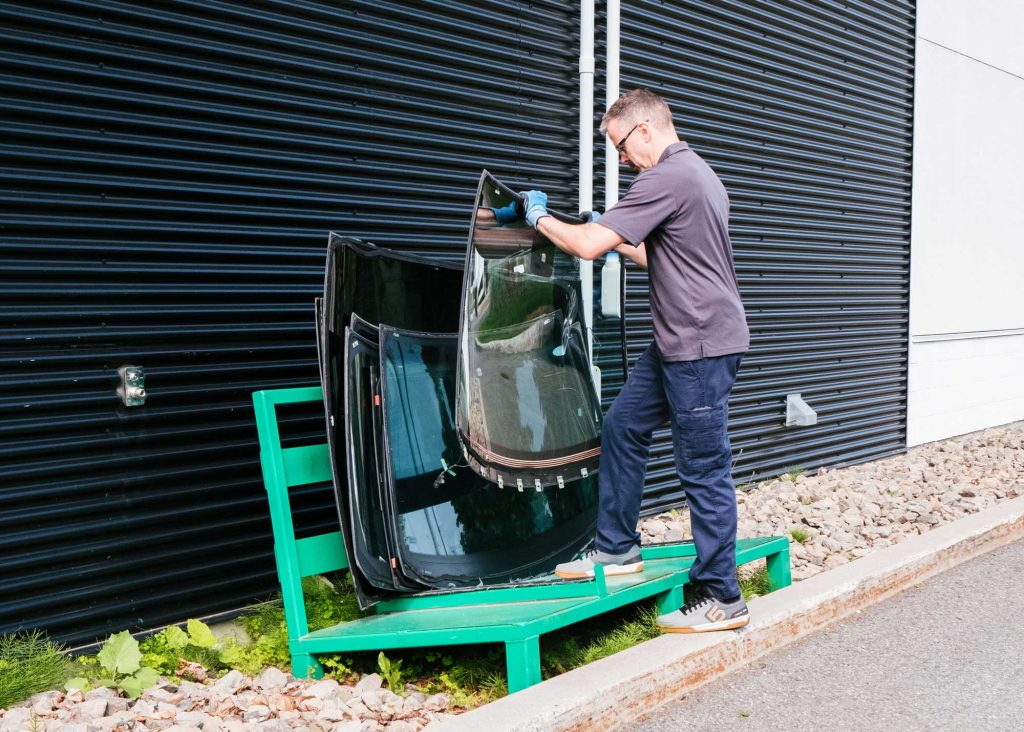
Did you know that the windshield from the very first car your grandparents drove is probably still buried somewhere — its glass fragments still intact? This non-biodegradable material could, in theory, take thousands or even millions of years to fully decompose.
Thankfully, there are windshield recycling programs like the one from VitroPlus to change that. Here’s how old auto parts are repurposed — and how you can do your part.
Overview of Auto Parts Recycling
Every year in Canada, at least 1.6 million vehicles are taken off the road. That’s just as many sets of tires, batteries, and metal frames to deal with. Without proper recycling, these materials would quickly fill up landfills, polluting the soil and emitting harmful gases.
The Challenges of Recycling Windshields
Many auto parts like metals, plastics, and motor oil are relatively easy to recycle. But when it comes to windshields, it’s a whole different story!
Unlike glass bottles or containers, windshields are covered with a thin layer of polyvinyl butyral (PVB), a thermoplastic that prevents the glass from shattering in a collision. This additive means the glass can’t be melted down and reshaped without contamination, making recycling more complicated.
In Canada alone, about 1.5 million windshields are replaced every year. At that rate, it would be unthinkable to send them all to landfills — especially since, with proper treatment, the glass can have a second life.
How Auto Parts Are Recycled
Driven by a growing interest in sustainability and government support programs, the auto parts recycling industry is booming. The Automotive Recyclers Association of Quebec (ARPAC) promotes this practice to mechanical shops, sorting centres, parts stores, and many other Quebec businesses that join on a voluntary basis.
It all starts with dismantling the vehicle. The engine, transmission, alternator, and other parts are removed, inspected, refurbished if needed, and resold at a fraction of the cost of new components. This not only reduces landfill waste but also offers drivers cost-effective replacement options.
Hazardous residual materials like motor oil, coolant, and brake fluid are drained and either filtered or safely disposed of. Batteries are also handled under strict regulations.
The car’s aluminium and steel frame are compacted, melted down, and reused to create new metals. Certain plastics and rubbers are repurposed for niche uses — for example, tires are often shredded into playground surfaces, and upholstery can become industrial insulation.
These processes reduce waste and support a circular economy.
How Windshield Recycling Works
A broken windshield can’t just be tossed in the recycling bin! Repair shops must be enrolled in a glass recycling program — like VitroPlus’ initiative launched in 2009 — to ensure glass panels are collected and transported to proper facilities.
At the recycling centre, specialised equipment separates the PVB layer from the glass, allowing each material to be processed individually.
The clean glass is crushed and screened into glass cullet, which is used to make fibreglass and glass containers — requiring about 25% less energy than producing new glass.
The PVB film is purified and can be reused as carpet underlay, sound insulation, or safety glass.
Despite all these efforts, according to the latest available data, only about 23% of household glass in Quebec is recycled. It’s likely that many windshields still end up in landfills. Making recycling programs more accessible and educating the public — like we’re doing with this article! — could help improve that number.
4 Tips for Recycling Your Auto Parts
As an individual, you can help make a difference. Here are four simple ways to ensure your old auto parts are handled responsibly:
- Check with an ARPAC-member company. Garages and businesses in this network ensure that parts are either reused or recycled properly and that hazardous waste is safely disposed of.
- Visit your local ecocentre. Most municipalities have partnerships with these facilities to help residents dispose of items not accepted in regular curbside pickup — like hazardous waste, batteries, tires, and used oils.
- Sell or donate usable auto parts. Are your tires, rims, bumpers, floor mats or mirrors still in good shape? Sell them through online classifieds (be sure to specify “sold as-is”), or donate them to a mechanic school to help train future technicians.
- Have your windshield replaced at a shop with a recycling program. Locations like your local VitroPlus make sure old glass is collected, sorted and recycled — for the environment and to support innovative manufacturers across industries.
